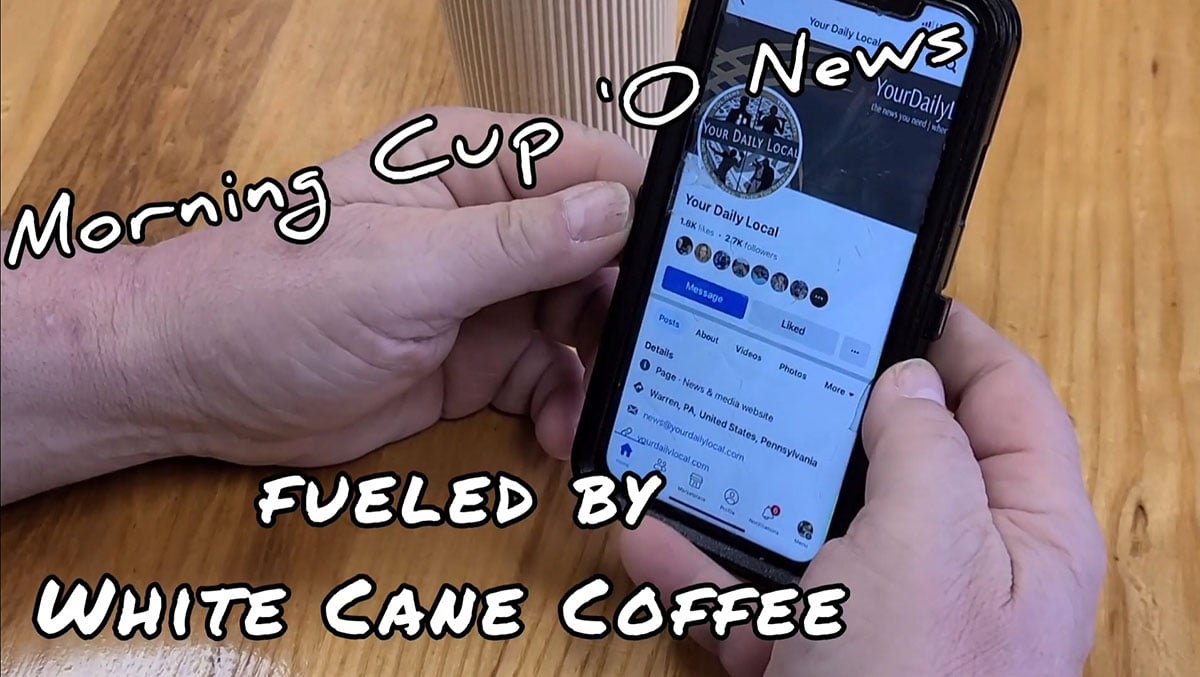Years ago, I believe in a Dear Abby or Ann Landers column, someone wrote asking about having an interest in a bank teller and how to pursue a relationship. The advice was to ‘keep making deposits and watch the interest grow.’
It was a great aphorism. A clever phrase that worked on multiple levels and was easily understandable to the hearer. I have remembered it for years and it came to mind again lately with the banking problems saturating news of late. Hopefully, as you read this the issues are easing. In retirement, I hear and see everything with a different perspective than I did ages ago. That is particularly true of interest rates.
Do you remember the interest rates the banks used to offer for savings accounts? They dwarfed the rates paid these days. I have seen ads while researching old newspaper articles, including those of the Forest Press, offering rates of four or five percent on savings accounts. These days, you would be hard-pressed to find rates for bank savings accounts of even one percent. I have seen years… yes YEARS… when my savings reported interest of less than ten cents. YEARS.
Interest is the reward offered for the use of money deposited with a bank. Your money is stored and put to work making money for the bank. That money is put to work by loaning it to others, individual and commercial, for which the borrowers pay interest. What interest are the lending institutions getting for this use of depositor money? Check the agreements signed when you open a credit card account. Rates of twenty-two percent or higher are not out of the realm of possibility. That is stark.
I googled ‘Interest rate on credit cards’ and got an unsurprising result. The average rate is now 23.65%. I was not surprised because I have watched this for years. Note that this is not only banks. Visa, MasterCard, Nyce, etc. issue cards. The rates are (my opinion) usury. Card-issuing institutions charge these rates because they can. They can because the market will bear them. Still, in the case of banks, who take deposits and pay (weakly) for the privilege, we should pay attention to the disparity between what they are willing to pay for the use of depositor money and what they require for the use of that money in their care.
Interest rates are not a monolith, single standard rate. There are things that factor into the interest rate we pay. An example is your credit rating. This is a subject that merits an article or two all of its own as it is a brew of calculations and considerations that often feel like something just shy of voodoo.
The ‘prime rate’ is another factor:
“The prime rate, which is sometimes simply referred to as prime, is the most commonly used benchmark used by banks and other lenders when setting their interest rates for various products, such as credit cards and home loans.”
The prime rate is the interest rate that commercial banks charge their most creditworthy corporate customers.
The prime rate is based on the federal funds rate. Banks generally use a fed funds rate + 3 to determine the current prime rate. The rates for mortgages, small business loans, and personal loans are based on the prime rate.
Lenders generally charge the most creditworthy clients the prime rate while others receive an interest rate based on their credit score of prime plus another percentage. The most used prime rate is the rate that The Wall Street Journal publishes daily.
Many (most?) credit cards are affected by a pernicious mechanism tied to the prime rate. The prime rate determines the interest on many (most) credit card accounts. Something like ‘prime rate+some addition’. Prime rate + 9%, for example. Consider an example from the PNC website:
Annual Percentage Rate (APR) for Purchases 0% introductory APR for the first 12 billing cycles following account opening. After that, your APR will be 17.49% to 29.49%, based on your creditworthiness. This APR will vary with the market based on the prime rate. (emphasis added by the author)
Why do I say pernicious? Because the interest on your credit card is applied to the full amount owed. This can bite if you do not pay your balance off by the end of each billing period. For example, suppose you owe $1,000 at 23.65%, the rate in place when you opened your charge account. If the prime rate were to go up 2%, if you carry a balance over to the next billing period, the interest accrued will be based on an annual rate of 25.65% for your whole balance, regardless of the rate in place when you borrowed the money. That can add up quickly. Silently. If you are a typical consumer, you have already felt this. If you have been watching closely, you have certainly seen it. Either way, you probably feel helpless.
If you have been fortunate enough to have a savings account, you certainly also know that you are not getting anywhere near the same returns on your money that banks are getting on your money. It is not a happy thought. Such simmering ‘outrage’ is what led to this article. There is growing pressure on banks to adjust/adapt to a changing market as deposit money is starting to flow from banks to institutions/financial devices that pay more for the use of that money. Competition should, as I understand things, force an increase in what is paid for the use of our money by banks. The nuts and bolts of the financial system are beyond my grasp for the most part. I’m not a financial adviser. Or expert. What I do understand is interest paid on my savings. I have to suspect you have the same sense of fair. This dynamic may mean that our money, in banks, may start to work a little harder for us. It certainly should move everyone to examine things even more closely. The closer we look, the more our interest may grow.
Editor’s Note: The author is not a financial advisor and nothing in this column should be construed as financial advice. All decisions you make about your money should consider the FDIC insurance of up to $250,000.00. Not all financial devices are covered.






























